
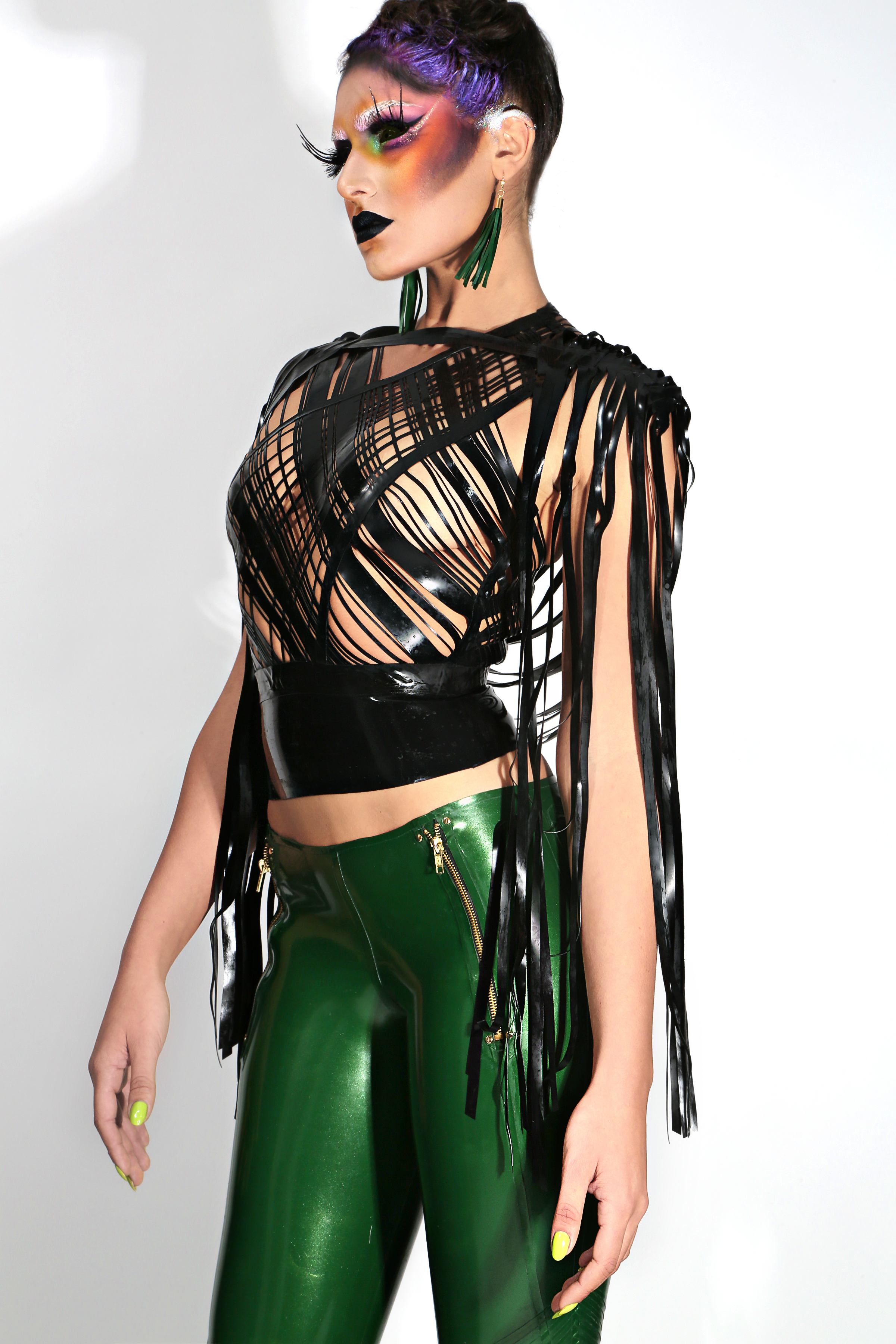
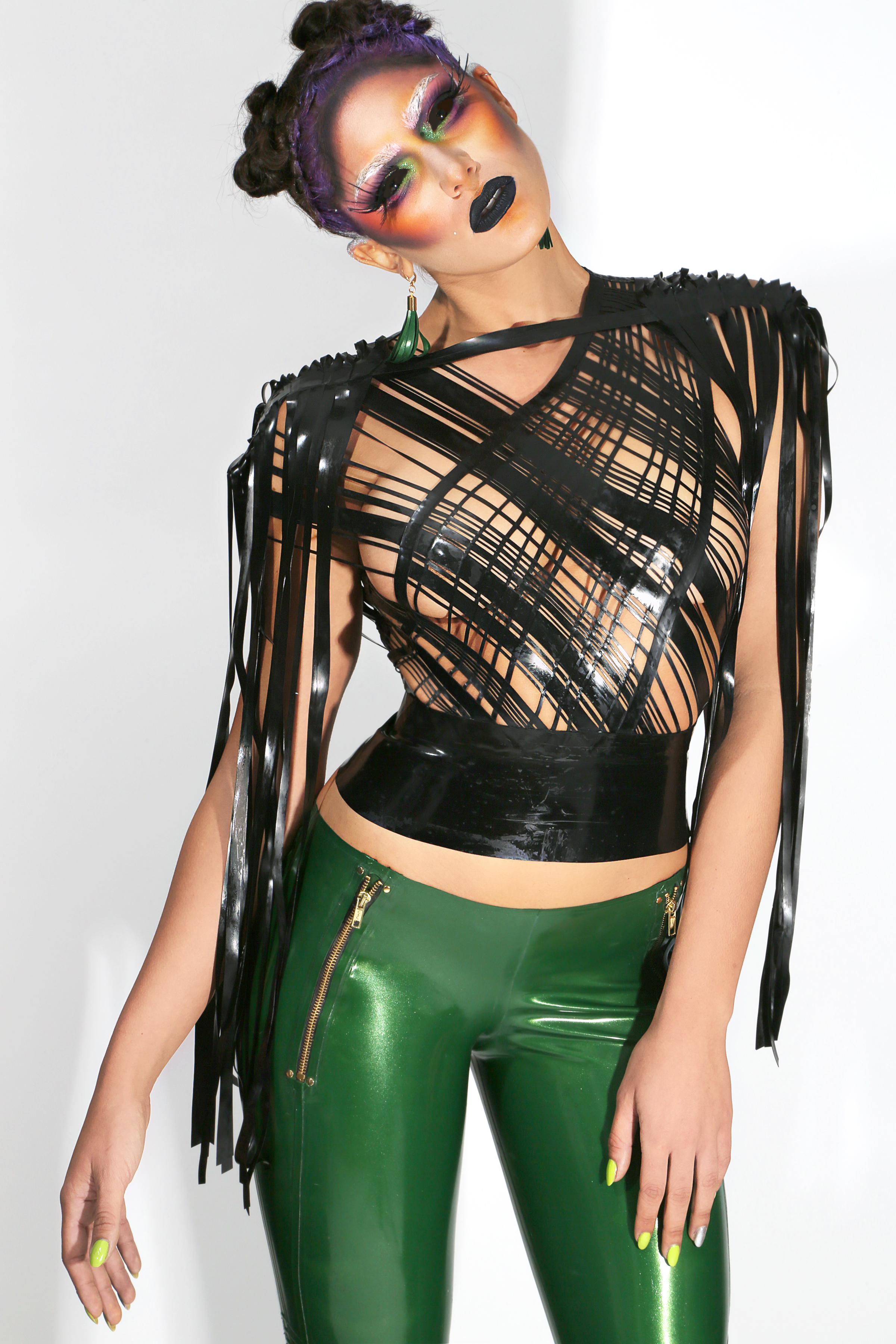
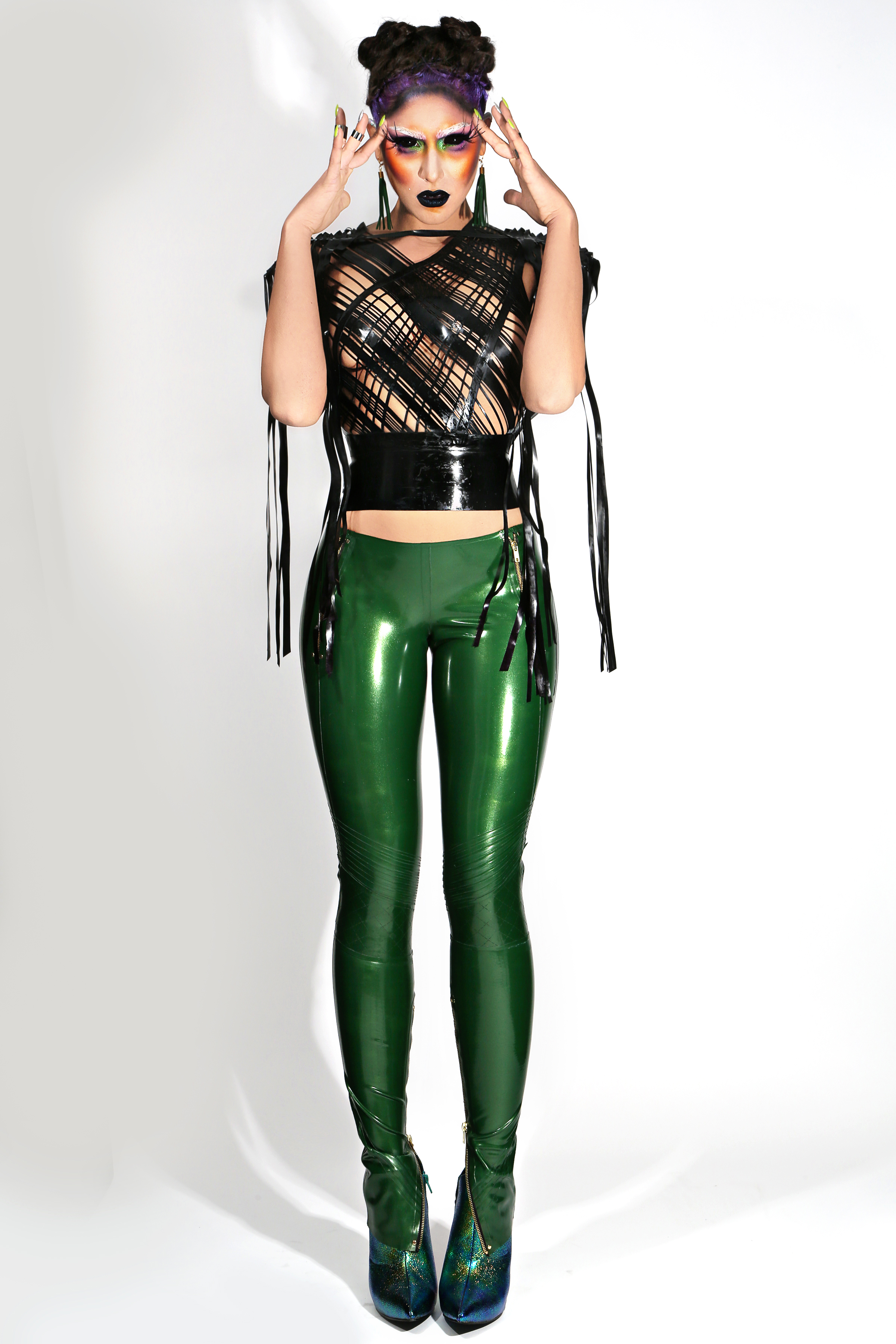

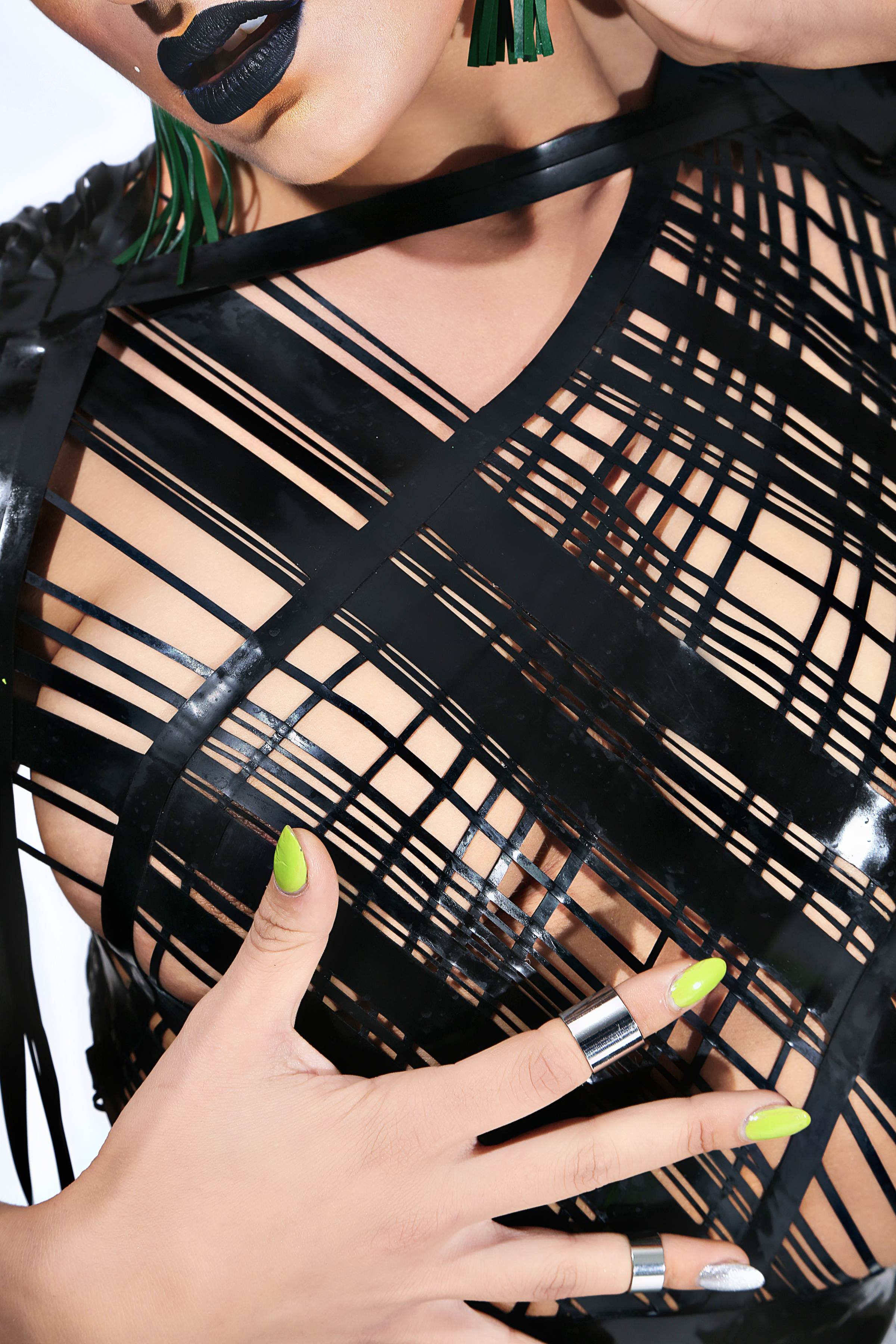


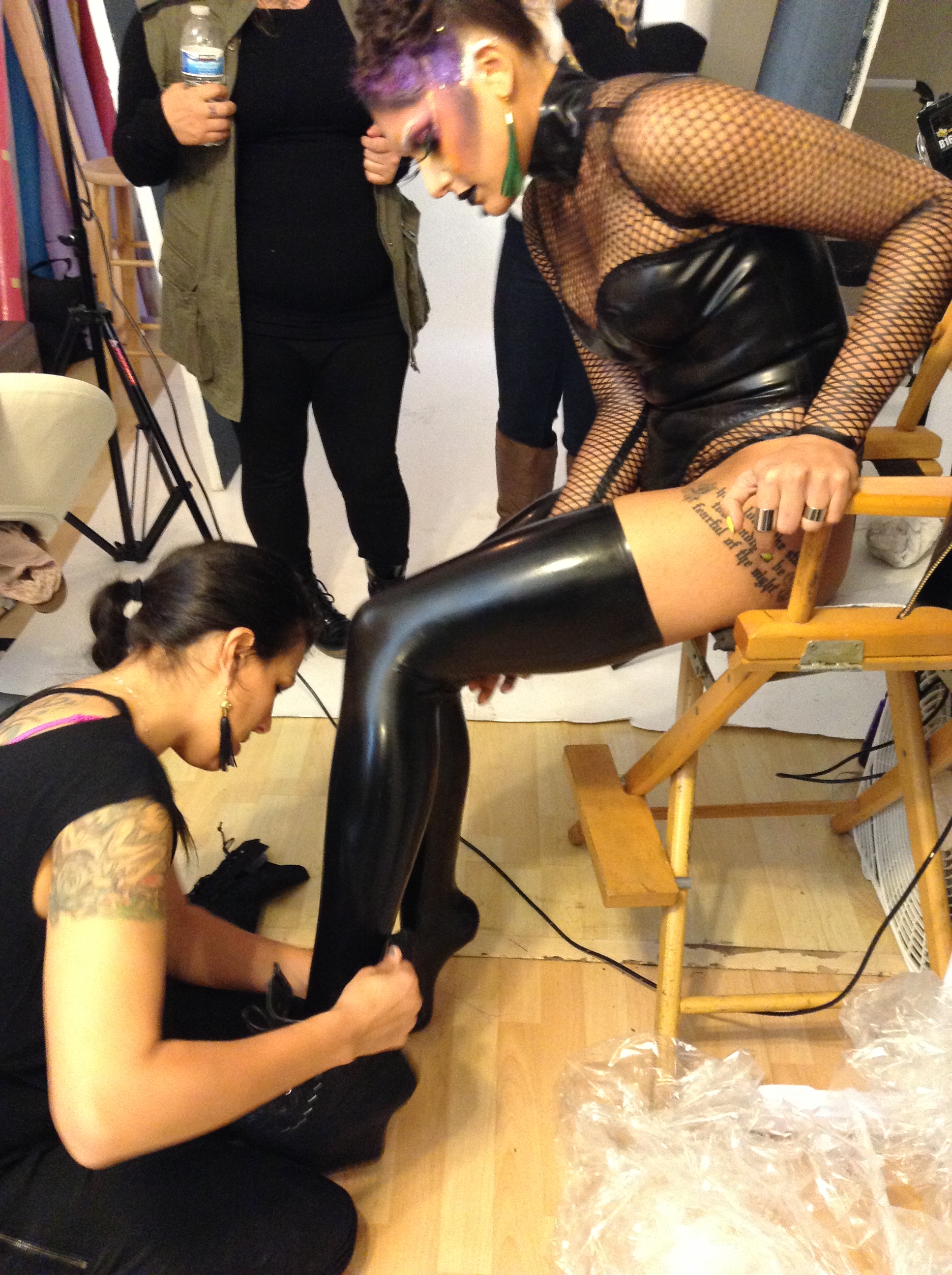


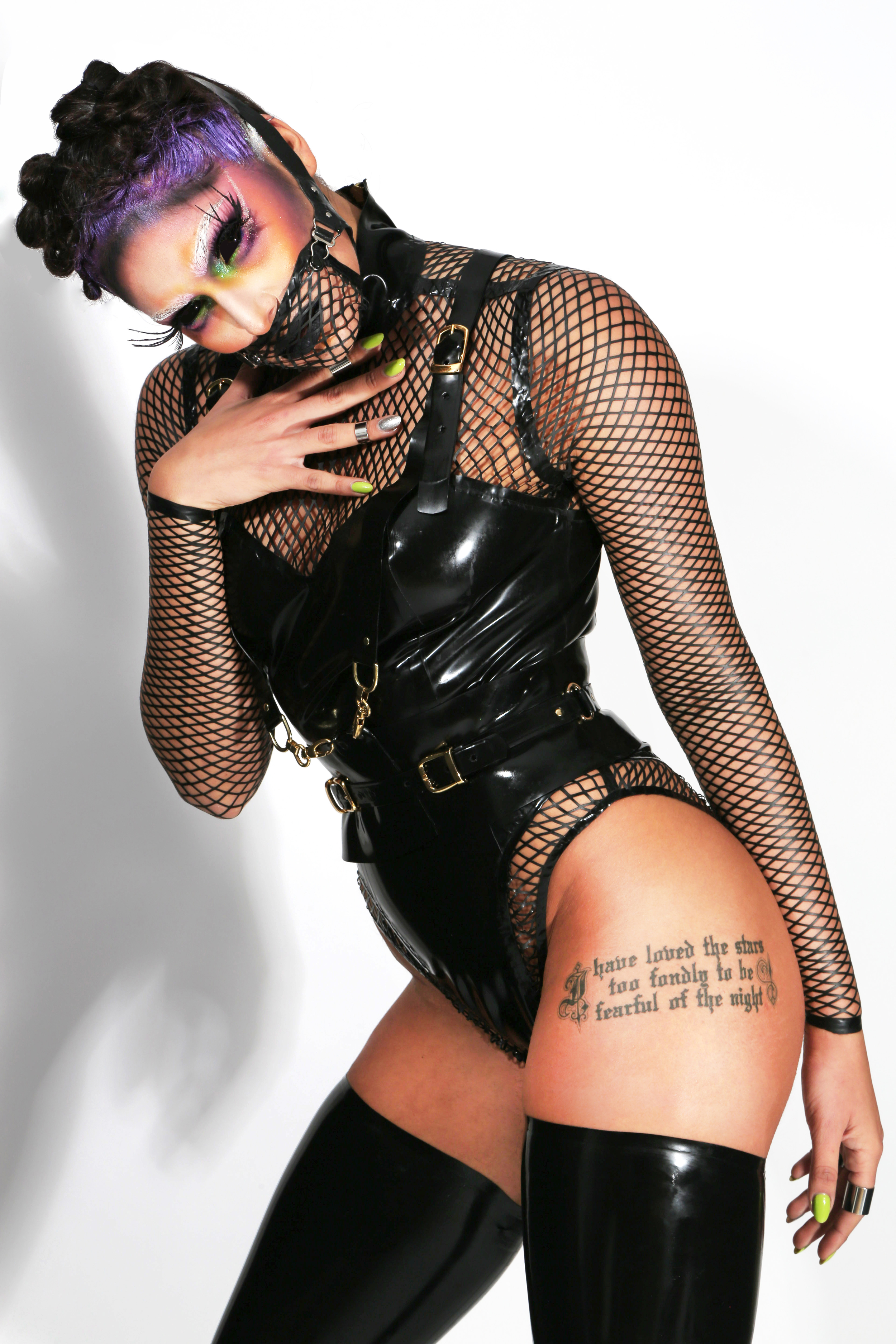

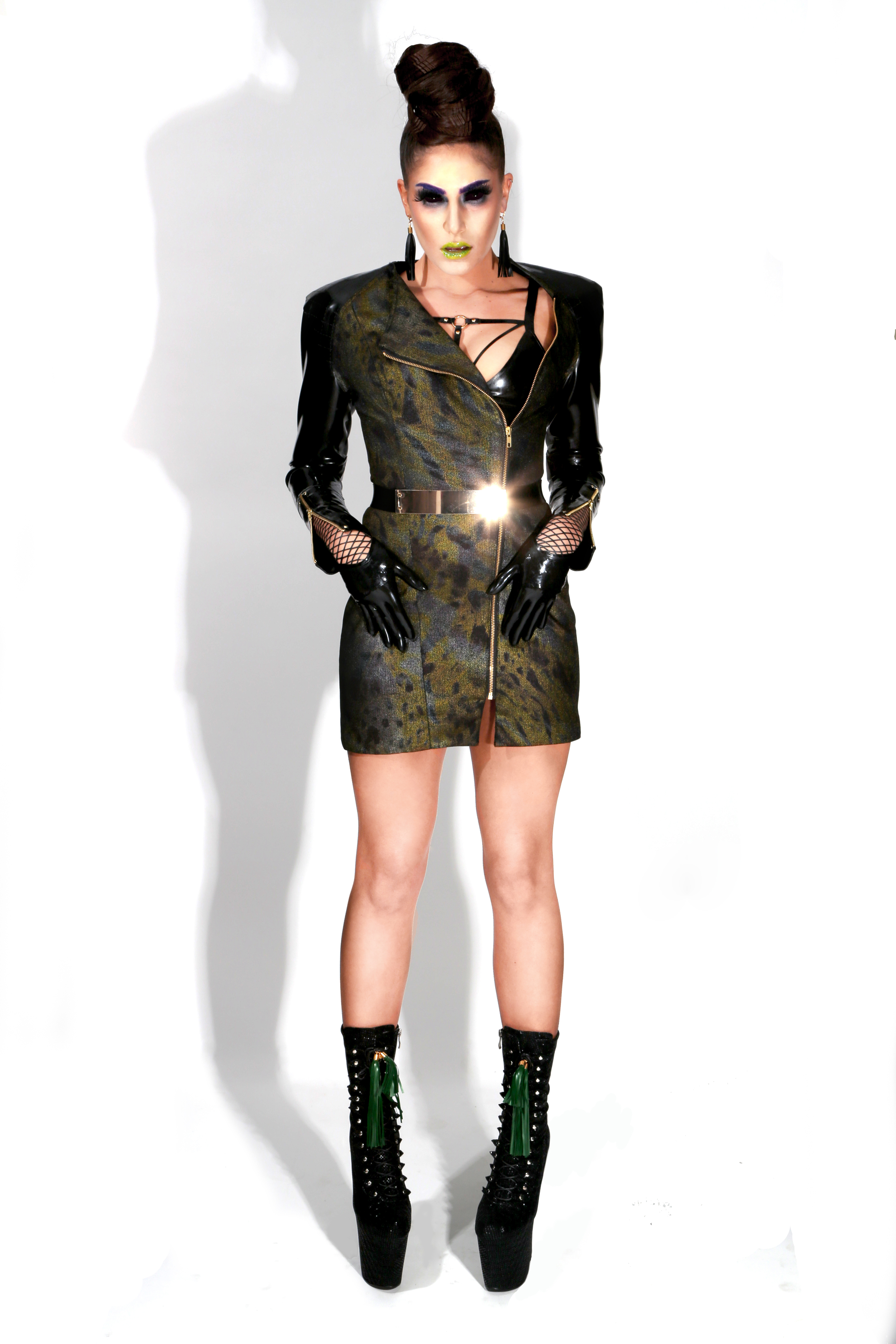





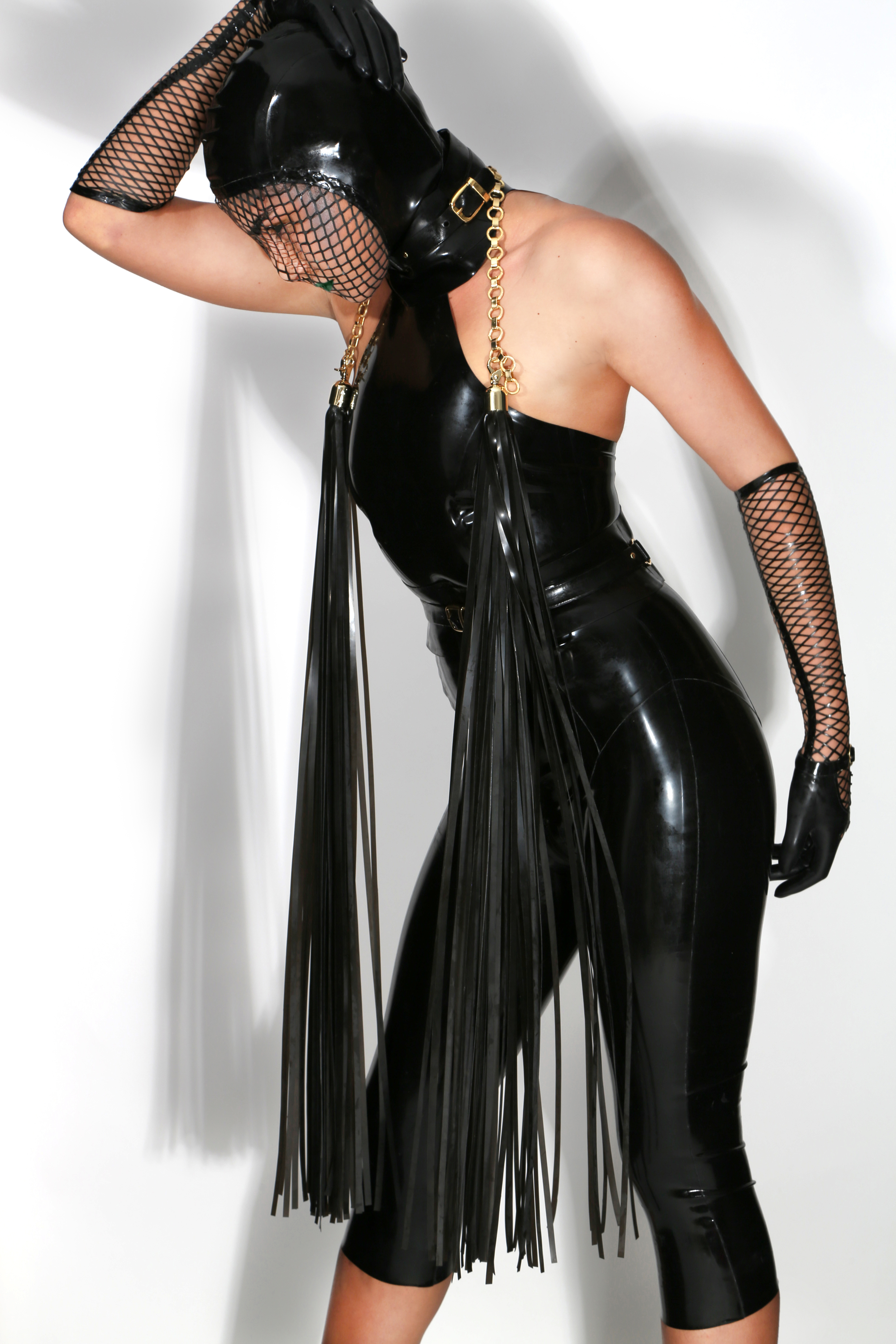
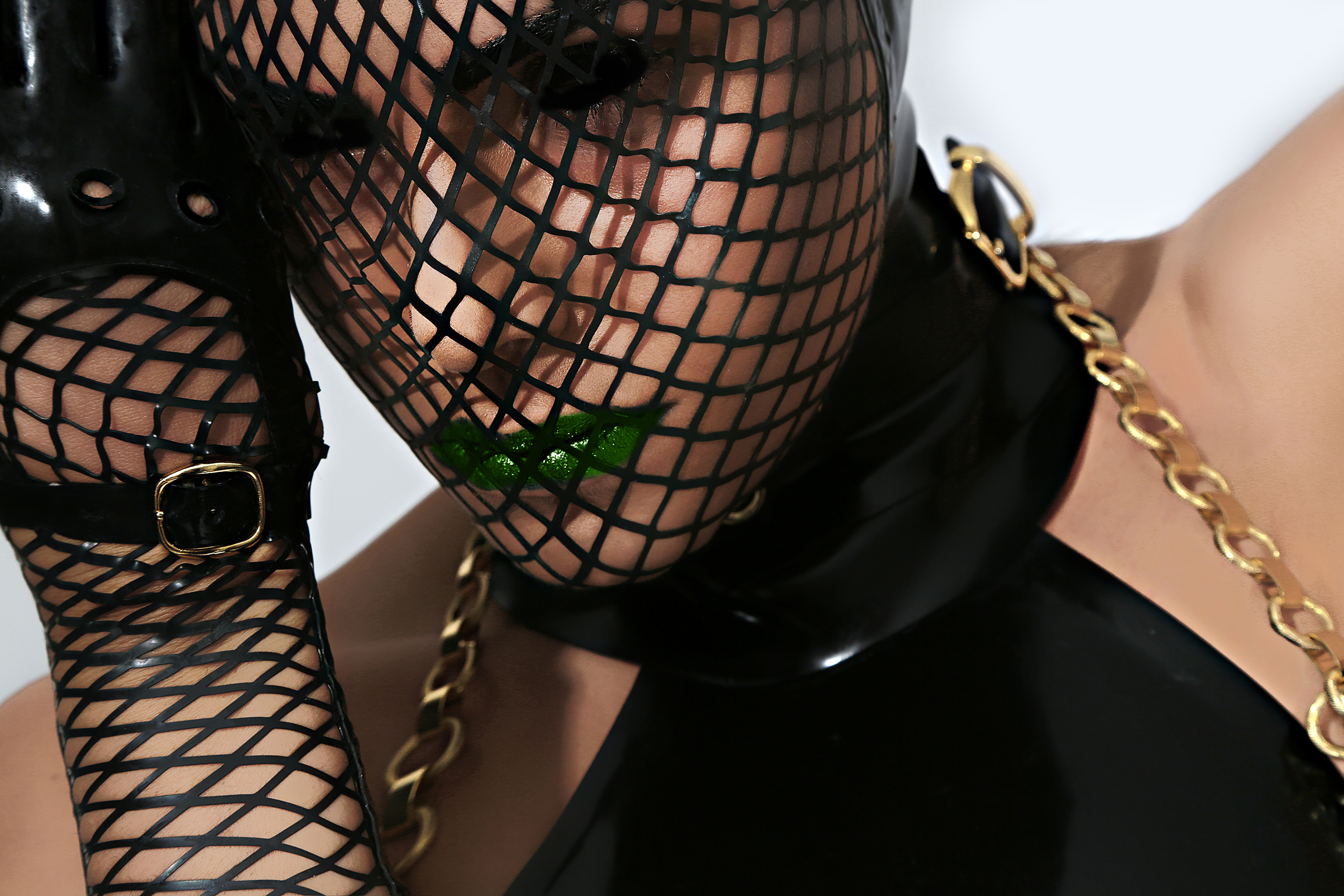

symbols Magazine: Who were your fashion icons as a kid?
Laura Petrielli-Pulice: I didn’t have any. I didn’t really get into fashion until I went to fashion school. I was a late bloomer in that department. In fashion school I learned about Alexander McQueen and Terry Muegler and all that stuff. Then I really started following it more.
sM: You didn’t have anyone that you were just like, “I love the way that this person does that, even though I can do it on my own”?
LP: No, not at all. I mean when I was younger, like high school, junior high especially, I started getting into the Gothic and Punk scene, so that kind of led me into my fashion decisions as a kid. All pretty much through high school and parts of college.
sM: I heard as a teenager you got kicked out of Catholic school.
LP: I did! Partly for what I was wearing. That happened my freshman year in Catholic school and they did not appreciate my fishnets and my garter belts and the safety pins in my ears and…
sM: They were not amused?
LP: No. So going into my sophomore year they were like you need to find somewhere else to go. So my dad sent me to boarding school on the East Coast.
sM: And were they a bit more forgiving?
LP: Yes.
sM: Did you straighten up a little bit?
LP: You know what? No, I didn’t. I continued to do what I did and they were actually fine with it because I was a good student. By the time I graduated high school they had changed the handbook where you couldn’t have piercings or colored hair. But I was grandfathered in. But the new kids that were coming into boarding school could not do all those things.
sM: I read that in fashion school, you developed a love for latex while working in lingerie?
LP: Yes.
sM: Of all the fabrics to use, why latex?
LP: Well, I think I was a senior in high school when I bought my first latex dress. So I knew what it was. When I was in college and had to choose an internship, and I was like “well I already know how to sew”, so I don’t want to take an internship with like a Betsy Johnson or anything like that because it’s like, what am I going to really learn? So, I decided, I was either going to do something with leather or latex.
Then I saw a latex designer in New York that was willing to take me on as an intern. It’s kind of hard to find people that will willingly teach you the trade. I was lucky enough to find somebody and so that’s why I chose that route. I wanted to learn, I wanted to learn everything in college and make sure that when I left college I knew that I had learned everything that I wanted to learn.
sM: What is it about that fabric that speaks to you the most?
LP: I think because it was different. In all my life I was always drawn to things that were different. And so I probably think that’s why I was drawn to that material.
sM: If you could describe your aesthetic how would you do it?
LP: These are always the toughest questions for me because I just kind of go with the flow with how I feel and what I’m attracted to at that particular time. So you’ll see since I started the company the different styles that I have played with. But there’s not any one (aesthetic). Right now I’m kind of going with what is natural.
The Voyeur line is taken after things that I like. In the beginning when I first started my company we dabbled in pin up, because that’s what was going on in the industry, but it’s not really my thing. You’ll see Vex and Voyeur the last few years going a little bit darker because that’s more of what I enjoy.
sM: Would you consider yourself to be kinky?
LP: Yeah absolutely. With the material it’s hard not to. It’s one of those materials that when you’re wearing it and touching it. It gets hard not to feel kinky. It’s hard to keep your brain from not going that route. And that’s for people that are into or not. That’s what the material does.
sM: I do love the feeling of it. At the shoot, I did put the gloves on a little bit and there’s just something about it.
LP: Exactly. What other material does that?
sM: It’s kind of inspiring actually.
LP: And that’s why I went into it and I knew that I could do different things than what other people were doing at the time. That is the glory of the material. That’s why I fell in love with it. Because there is no other material that does that.
sM: So let’s backtrack a little bit with the show (Bravo’s Styled to Rock). Was it what you had imagined it would be? What would you have changed or done differently, if anything, regarding the show?
LP: I don’t think I would have changed anything. I’m still happy that I did it just because at that point in my career I was kind of over it. I had been doing it for almost 14 years at that time. I was kind of tired of it. Tired of struggling. I was uninspired. Going on the show definitely put a fire back in me. I didn’t have to worry about my daughter or my husband. I was just there to design and be creative. I had lost that and I had forgotten what that creative fire felt like. I fell in love with it again. That’s how you know. Since the show the last year, you notice it in my work. I got it again.
sM: That creative reboot… It’s always a beautiful thing. Your designs have been on the backs of Lady Gaga and the breasts of Madonna. What have you been the most proud of?
LP: You know what? I think it’s just the panties now. There’s no credits and now there’s a few designers fighting over who’s wearing what on there. So, to be honest, I have no idea what’s on Madonna except for the stylists credits for the bra and the panties. So, Madonna’s wearing something of mine, I just don’t know what it is. It’s been a crazy few months.
sM: Which of those have meant the most to you so far?
LP: Oh that’s a tough one. Lady Gaga is awesome because it’s actually a paid gig and I did a lot of stuff for them. The recognition is great but it doesn’t pay the bills. In the end, recognition is awesome, but you have to be able to pay the bills or you can’t survive.
I’m going to say probably Lady Gaga. The head pieces are a designer in London. And we did everything else. We did her body suits, the tentacles and all the dancers. There’s 14 dancers that we made inflatable pieces for. Then we made several outfits, some you haven’t even seen yet, because she hasn’t worn them yet. And we’re still working on stuff for them.
sM: So you’re on the way.
LP: It’s sad when you have to get excited about getting paid for your craft. That’s how the industry works.
sM: That’s how the KickStarter began, correct?
LP: The KickStarter started right after I got home from filming the show. I’ve always had limited funds, and what I could do. There’s so much I want to do with the company that I can’t do because I’m funding it. So everything I make in sales for the last 14 years I’ve been putting it back into the company. So I figured I’d give it a try and see if it works.
sM: How do you feel about it so far?
LP: It’s a little discouraging. But there’s still a few weeks left. Everybody keeps telling me all the activity happens at the end. So I’m waiting. We’ll see. We’ll see what happens.
sM: We’re pushing you as much as possible.
LP: Thank you, I appreciate it. I mean that’s the whole point right, is that it’s a crowd funding thing? Everybody has to spread the word which I’m not normally used to. I’m so used to doing everything by myself. So, I’m outside of my comfort zone with KickStarter for sure. I take things so personally. It’s hard for me to watch this thing kind of just stall out right now. And not take it personally. (Update: KickStarter was successfully FUNDED!)
sM: Especially with your credits and your past history to be like oh okay well I thought you liked me.
LP: Exactly. That’s another thing with the industry. It’s like, you might have a lot of followers, but are they really followers and fans?
sM: So we had a chance to interview fellow contestant and your friend Autumn Lin (Kietponglert). She was saying that one of the biggest things she hopes for with the future fashion is functionality with technology. Like the advent of just a simple cell phone pocket. In Japan there’s a designer that’s developed clothing that actually blocks cell phone signals, which is weird, but also interesting. What are you looking forward to, or at the very least, what do you see? What do you wish for the future of fashion?
LP: Well my wish has always been that latex goes mainstream. The whole kick starter and Voyeur line is so that latex technology can be worn everywhere. It shouldn’t just be for the bedroom, or for people’s fetishes because it’s such a great material. So that would be my hope. That’s what I’m trying to do. Because a lot of people don’t think about it. That’s where the jewelry comes in with Voyeur, and the accessories. I’m getting people, housewives, to wear latex and not even think about it being latex.
sM: It’s such a titillating material I’m just wondering how it would be when your first business woman walks into the office with a latex skirt on as part of her suit.
LP: I think it would be awesome.
sM: I do too. I think it would be amazing. So after KickStarter what do you have going on? What can we look forward to?
LP: Right now I’m looking into different materials of latex, prints and textured latex. That’s what I’m concentrating on. Textured snake prints, crocodile prints, animal prints. It’s actually not really printed on it’s part of the latex, so it doesn’t rub off or anything like that. I’m working on spring for Voyeur, and working on revamping the Vex line completely because I haven’t worked on the Vex line in several years. So a complete overhaul of that website.
sM: Wow. We look forward to seeing that.
LP: It’s a lot of work for one person.
sM: That’s the best reward in the end. If anyone can do it we know you can.
LP: Thanks!
